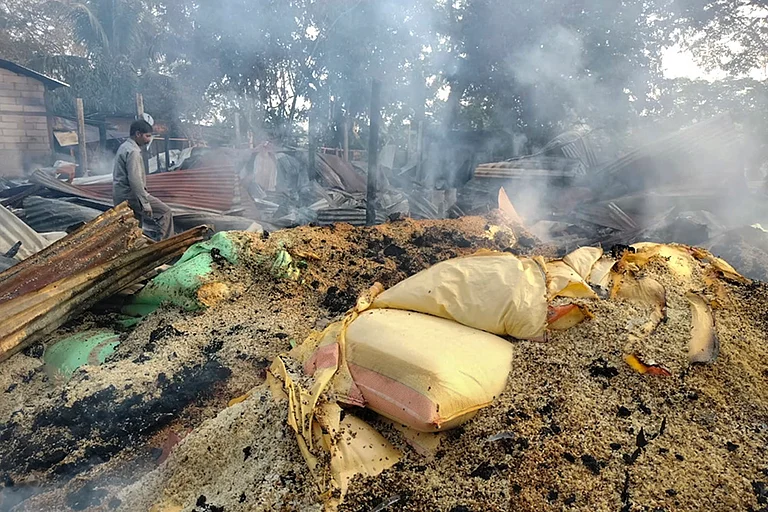West Bengal, the state worst hit by groundwater arsenic contamination, has a new problem: nitrate contamination in groundwater. The school of environmental studies at the Jadavpur University has found excessive presence of nitrate in groundwater during their water quality survey across different districts conducted over the past couple of years.
“For years, arsenic contamination had been the main concern regarding groundwater in West Bengal. Nitrate concentration was found only in Hooghly district more than a decade ago. But following the recent studies, we can see that we also need to address the presence of nitrate in groundwater beyond the permissible level in several blocks of West Bengal,” said Tarit Roychowdhury, an associate professor at the department of environmental studies, Jadavpur University.
Researchers at the school of environmental studies conducted groundwater quality surveys in the districts of East Bardhaman and Nadia over the past two years. Excessive nitrate concentration was found in groundwater samples from six blocks in Bardhaman district and four blocks in Nadia district. The institute’s research scholars Antara Das, Ayan De and Madhurima Joardar, among others, worked with Roychowdhury on these projects.
Researchers said that nitrate contamination is usually a result of agricultural activities with excess use of nitrogenous fertilisers and overexposure of nitrate through drinking water causes a risk of rare conditions like infant methaemoglobinaemia or infant cyanosis.
Nitrate is highly soluble in water and leaches into groundwater while passing through the subsoil layers because the soil particles have low nitrate retention capacity, they said. It is considered among the most substantial chemical pollutants in aquifers and groundwater around the world.
The situation in Nadia district was alarming. “There is a matter of anxiety from the promising other toxic chemicals like NO3 as few samples from four blocks have been identified with excess NO3 concentration (45–57.6) mg/l,” said a report, titled, ‘Quality and Health Risk Evaluation for Groundwater in Nadia district, West Bengal: An Approach on its Suitability for Drinking and Domestic Purpose’. It was published in the Elsevier journal.
This study on Nadia also revealed that nearly two-thirds of groundwater samples collected for a study from across the district of West Bengal were found to be ranging from poor to ‘extremely unsuitable for drinking.’ The study was conducted on 110 samples collected from all 17 community development blocks in the district on the eastern bank of river Hooghly.
“The groundwater quality index data shows that 38.2% and 19.1% water samples are classified as ‘poor’ and ‘very poor’ whereas 9.1% samples are extremely ‘unsuitable for drinking’,” said the report. “It can be concluded that the current status of drinking water is not safe and it may improve if rainwater is included in the freshwater supply system. Therefore, regular monitoring is suggested for the groundwater quality along with a continuous awareness program for the entire mass residing in the studied area.”
In Bardhaman district, excessive nitrate concentration was found in “very few samples” collected from Bardhaman 1, Ondal, Raniganj, Jamuria, Barabani and Salanpur blocks, according to a report titled ‘Assessment of Groundwater Quality in Bardhaman district, West Bengal, with special reference to its WQI’, which was published in the journal Indian Ground Water in 2019. Nevertheless, researchers felt that the groundwater quality needed regular monitoring to keep track of changes.
The study found that the overall groundwater quality in the district was satisfactory, except for in blocks like Pandaveshwar where arsenic contamination has been a problem for a long time.
According to Roychowdhury, a co-author in both the reports, reducing dependence on groundwater is the best way out of the impending health complications that contaminated groundwater presents.
“We need to move towards using surface water and rainwater harvesting. That’s the only long-term solution to avert contamination-related health crises,” he said.
Nine of the 23 districts in West Bengal suffer from severe arsenic contamination in groundwater and three other districts had reported fluoride contamination.
Geographically, arsenic contamination has been found in the districts belonging to the lower Gangetic alluvial plains, while fluoride concentration was found in the southwestern districts that are topographically part of the eastern extension of the Chotanagpur plateau. Nitrate concentration has been found in both alluvial plains (Nadia) and the relatively barren, Jharkhand-bordering mining belt of West Bardhaman.


























